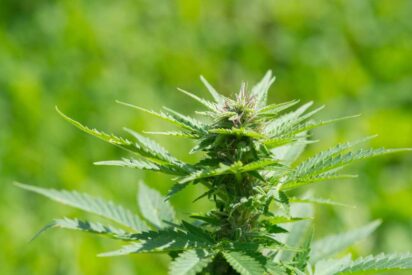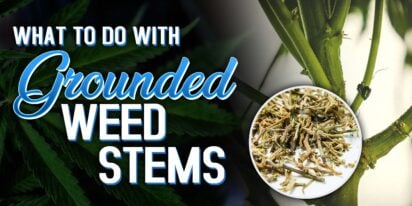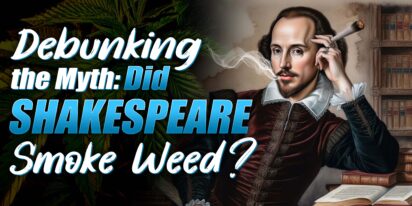
Are You 18 Or Over?
YesOr
No By clicking yes, you certify that you are over 18. By using this website, you agree to our legal disclaimer.605+ Cannabis Strains over 20 Breeders worldwide.
Table of Contents

Autoflowering cannabis is the third type of cannabis that evolved over the last few decades. It was first discovered in the early 1920s by a Russian botanist and is said to be most-likely from Central or Eastern Europe. As the name suggests, these plants automatically begin flowering at a specific age. Unlike traditional cannabis plants that flower depending on their light cycles or the amount of light they receive, these plants have highly accelerated growth rates and do not have a photoperiod sensitivity.
That being said, because autoflowering plants have a significantly different life cycle, they also have different autoflower nutrients requirements for fertilization and higher performance and yield.
Like any other growing plant, cannabis autoflower seeds need a number of different minerals in order to fully develop to happy, healthy plants. They use photosynthesis to produce their food from water and carbon dioxide. Autoflowering cannabis plants use large quantities of three primary macronutrients: Nitrogen (N), Phosphorus (P), and Potassium (K).
This nutrient is considered the most important component of any plant growth. In fact, Nitrogen has been used in plant cultivation since prehistoric times. Nitrate (the form of Nitrogen that plants use) forms part of the growth and development of vital plant cells like the cell membranes and the chlorophyll molecules. Nitrogen is a core nutrient that forms the DNA needed in plant survival. Cannabis plants, unlike normal plants, are very efficient in taking up nitrogen. Nitrogen deficiency is a rarity in the world of marijuana cultivation.
As the mineral responsible for protein synthesis, energy storage, and nutrient uptake, Phosphorus plays an essential role in the plant’s entire growth process from seedling development to the timely formation of roots and flowers. It is a vital nutrient used to maintain the cannabis strain’s genetic integrity as it gets passed down from one generation to the next. Without adequate levels of this nutrient, your plants will suffer reduced health and stunted growth, both of which can greatly impair your crop quality and yield.
Another nutrient that is crucial to sustaining plant growth and production, Potassium is the final primary macronutrient for plants, including autoflowering cannabis plants. It fulfills key physiological functions, such as the regulation of carbon dioxide, strengthening of the plants, and even retention of water in the plants. During a drought period, this macronutrient helps improve the plant’s strength. This includes the resistance of the cannabis plant’s root system and tissues.
Autoflowering marijuana plants also need other macronutrients to balance the N-P-K inputs and for maximum growth stimulation. Aside from the N-P-K ratio, these plants also require Calcium (Ca), Magnesium (Mg), and Sulfur (S) in relatively abundant amounts but significantly lower doses than N-P-K.
These three nutrients are called secondary micronutrients. It is important not to be confused with the term “secondary” as the deficiency of any of these nutrients is just as detrimental to the growth of the autoflowering cannabis plants as the lack of the N-P-K macronutrients.
Calcium is one of the structural autoflower nutrients components that contributes to the integrity of the cannabis plant’s roots, cell walls, and membranes. This nutrient is key because well-developed cell wall structures help strengthen stems and leaves, combat pests and illnesses, and respond to environmental challenges. Deficiency of Calcium among cannabis plants are common and will show as distorted growth in new root tips and yellowing in leaf tips.
When it comes to the green coloring of the cannabis plants, Magnesium is the powerhouse behind the process. It is another essential macronutrient that has to be abundantly present in all the phases of the life of the autoflowering cannabis plant because of its role in the chlorophyll molecule. Without this macronutrient, cannabis plants would not be able to capture and utilize energy from the sun.
Chances of Sulfur deficiency is very slim when growing cannabis plants in soil. This is because pretty much all soils contain considerable amounts of this macronutrient. When growing your autoflowers in compost or with hydroponic systems, ensure that the needed macronutrient levels are supplied through feedings. Sulfur is another important structural mineral component for autoflowering cannabis plants that assist in the production of important amino acids, proteins, enzymes, and membrane channels. It also helps plants fight off diseases and grow and form healthy seeds.
Important micronutrients that all cannabis autoflowering plants need include Boron, Chlorine, Copper, Iron, Manganese, Molybdenum, and Zinc. The plants will need these nutrients in smaller quantities as compared to macronutrients. But just the same, their roles should not be underestimated as any deficiency in these elements will prove damaging to the overall health of the cannabis plants.
Alongside Calcium, Boron is a structural nutrient necessary for the development of cell walls and membranes. This micronutrient is vital during reproduction; otherwise, deficiencies will translate into abnormal growths of the young shoots.
Chlorine works alongside Potassium with many plant functions, including the absorption of nutrients, helping with photosynthesis, preventing plant diseases, and sustaining plant development. Autoflowering cannabis plants require only very small yet optimal quantities of this micronutrient to remain healthy.
This micronutrient is responsible for activating enzymes in plants that are involved in lignin synthesis. It is also crucial in several other chemical reactions, including the process of photosynthesis, plant respiration, and plant metabolism. A cannabis Copper deficiency appears as dark green leaves taking on a blue or purple undertone with white-yellow edges. The leaves may also feel stiff.
Cannabis plants need only small amounts of this micronutrient to produce chlorophyll. A deficiency in this nutrient is usually caused by problems with pH. Without adequate levels of this nutrient, plants will turn to a sickly yellow color instead of a luscious green, while veins remain green.
Manganese is responsible for carrying electrons during the process of photosynthesis. It is also intimately involved in several other functions, including plant respiration, hydrolysis, nitrogen assimilation, root cell development, and energy transference. Any deficiency in this micronutrient is detected on young leaves showing signs of zero growth and slow blooms.
Molybdenum deficiency is extremely rare in autoflowering cannabis plants, but if it does hit your crop, it needs to be worked on urgently. Plants take up this micronutrient in the form of molybdate, and it plays a crucial part in the regulation of various plant functions. It is an essential component in the conversion of nitrate for the synthesis of amino acids.
This is the last of the required micronutrients and is usually needed in the smallest quantities. They are used to build enzymes and proteins and directly interact in the creation of the chlorophyll compound. A zinc deficiency is detected as small dots appearing on the edges of the youngest leaves of the autoflowering plant.
Autoflowering cannabis plants require a number of autoflower nutrients – macronutrients and micronutrients – in different amounts. While they may be named under different classifications, all these nutrients are equally necessary to ensure quality cannabis growth, plant development, and amazing harvests. Any signs of deficiencies should be urgently supplied using additional nutrients. Otherwise, your autoflowering cannabis yields will suffer.

[ez-toc] In indoor gardening, maintaining an optimal temperature within your grow tent is crucial for the health and productivity of your plant

[ez-toc] Welcome to the delightful world of cannafudge crafting, where sweetness meets sophistication, and cannabis infusion adds a unique twis

[ez-toc] You’ve finished trimming your weed, but what about those leftover stems? Don’t throw them away! These seemingly useless bits can a

Feeling high can be an exhilarating experience, but it's essential to make the most of it by engaging in activities that enhance the sensation a

[ez-toc] Starting with planting cannabis seeds might seem simple, but how deep should cannabis seeds be planted for them to grow well. In this

[ez-toc] In the realm of cultivating cannabis, maximizing growth during the flowering stage is a top priority for growers. While various method

[ez-toc] Nutrient burn is a common issue among plant enthusiasts, often resulting from over-fertilization or improper nutrient application. It

[ez-toc] Welcome to our complete guide to dealing with harmful pathogenic mold in cannabis. For those who grow cannabis, preventing mold is vit

In recent years, there has been speculation about “did Shakespeare smoke weed?” This idea originates from a study by South African anthropol

[ez-toc] Welcome to the hidden world beneath the soil – the inside of the marijuana root system. While the vibrant leaves and resinous flower

Are You 18 Or Over?
YesOr
No By clicking yes, you certify that you are over 18. By using this website, you agree to our legal disclaimer.